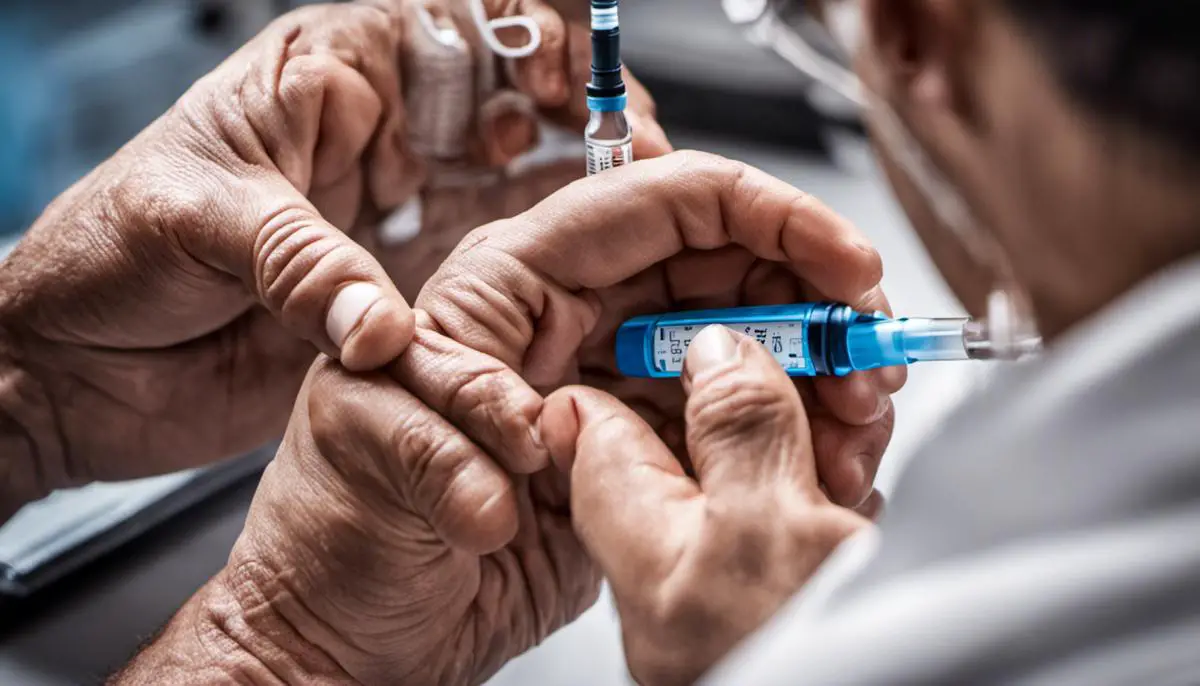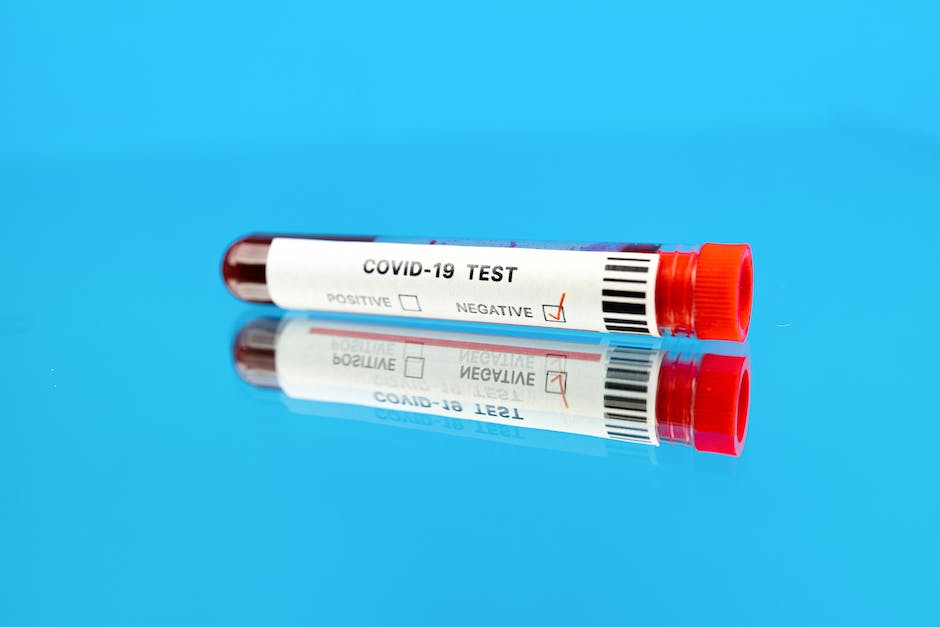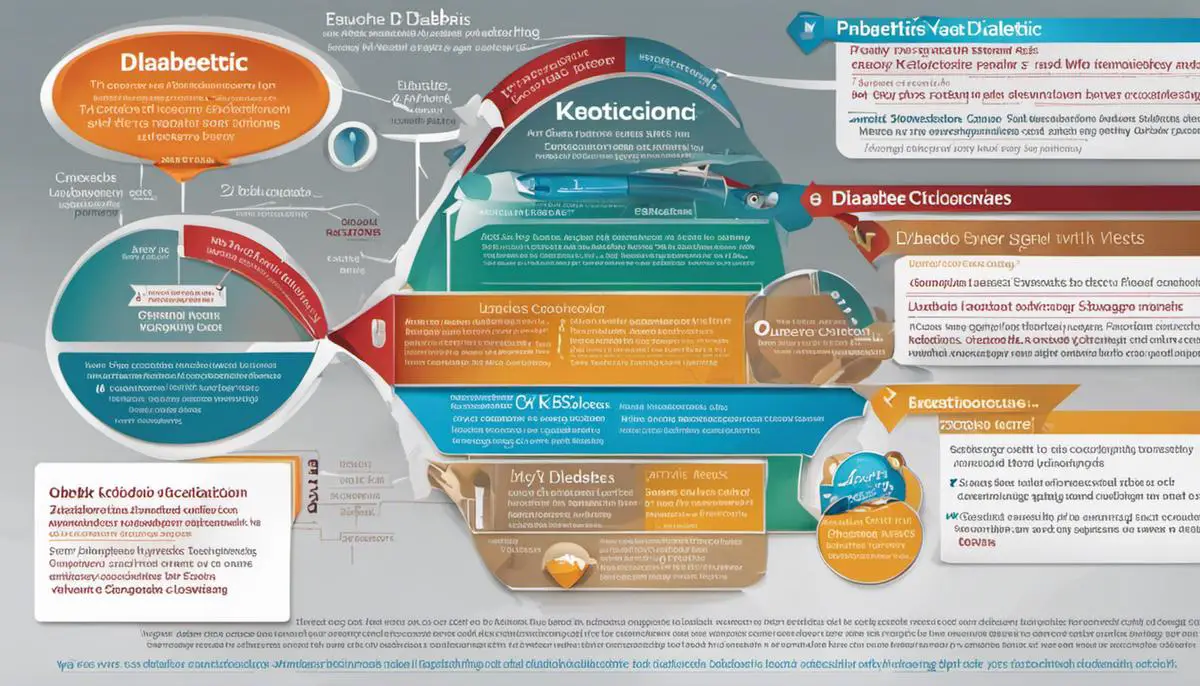Understanding the complexities of our health can often seem an insurmountable challenge. When it comes to managing chronic illnesses such as diabetes, the importance of being informed cannot be understated. One such complication that arises from diabetes is Diabetic Ketoacidosis, commonly known as DKA. With the capacity to potentially wreak havoc if undetected or untreated, understanding DKA is crucial for those living with diabetes. This discourse seeks to demystify DKA, providing an in-depth look into its causes, symptoms, diagnostic procedures, the possible complications if left unaddressed, and the preventive measures that can be taken.
Overview of Diabetic Ketoacidosis (DKA)
An Understanding of Diabetic Ketoacidosis
Diabetic Ketoacidosis (DKA) is a dangerous complication that can occur in individuals with diabetes, more often in those with type 1 diabetes. It’s caused by a shortage of insulin in the body which prevents glucose from entering the cells and being used for energy. This state of energy deficiency leads the body to break down fat as an alternative energy source. During this process, ketones – acid molecules – are produced as a by-product. If severe, it can lead to a condition known as ketoacidosis, essentially causing too much acid in the blood.
The Connection Between DKA and Diabetes
Insulin plays a significant role in controlling blood glucose levels within the body. Individuals with diabetes, especially type 1 diabetes, may not produce sufficient insulin leading to high blood glucose levels. Uncontrolled blood glucose levels can lead to DKA. Moreover, other conditions like infection, illness, or not taking medication as directed can also trigger DKA, even in controlled diabetes.
Reasons Why DKA Occurs
There are several reasons why DKA occurs. Primarily, it is due to inadequate insulin, which can arise from missing insulin doses or pump malfunctions. Other triggers can include infection or illnesses, stress, heart attack, stroke, alcohol or drug abuse, certain medications and in some cases, undiagnosed type 1 diabetes. Furthermore, dehydration, physical or emotional trauma can provoke DKA as the body needs more insulin in these situations.
Significance of Key Terms Relating to DKA Diagnosis
Understanding critical terms related to DKA can help decipher its diagnosis.
- Hyperglycemia: This refers to a significantly high level of glucose in the blood, a common occurrence in DKA. Symptoms include frequent urination, excessive thirst, and unexplained weight loss.
- Ketones: As mentioned above, ketones are acidic molecules produced when the body breaks down fat for energy when there’s not enough insulin. High ketone levels can make the blood too acidic. Ketones can be tested in urine or blood, and elevated levels are a critical sign of DKA.
- Acidosis: Acidosis refers to having too much acid in your body fluids. In DKA, this can occur due to elevated ketones or other metabolic issues. Signs can include rapid breathing, fruity breath, nausea, vomiting, and even unconsciousness if severe.
- Blood Glucose Levels: Along with ketones testing, regularly monitoring blood glucose levels is also crucial in diagnosing DKA. Normal blood glucose levels range between 70 to 130 mg/dL before meals and less than 180 mg/dL two hours after meals. Consistently high glucose levels suggest a high risk of DKA.
Understanding these terms becomes instrumental in diagnosing DKA. Additionally, recognizing the symptoms early allows for prompt treatment, thereby preventing the condition from becoming life-threatening.
Understanding DKA Diagnosis
Diagnosing Diabetic Ketoacidosis (DKA) is critical and involves various tests, primarily blood tests. These are designed to measure glucose and ketone levels. Elevated blood glucose beyond 250 mg/dL and the presence of ketones indicate potential DKA. Additionally, an arterial blood gas test might be conducted to measure blood acidity levels.
Diagnostic procedures could also include urinalysis to identify ketones in the urine, and infection screening tests to eliminate any infections that could trigger DKA. A physical examination is typically performed to spot dehydration signs, a common issue related to DKA.
Proactive diagnosis, immediate medical response, and effective diabetes management are key to preventing DKA and its severe complications.

Symptoms and Signs of DKA
Identifying DKA Symptoms
Diabetic Ketoacidosis, or better known as DKA, is a severe complication often linked to type 1 diabetes, although it can also be seen in type 2 diabetes. It is marked by high blood sugar levels, ketones found in the urine, and acidosis occurring in the body.
Hyperglycemia, an excessively high blood sugar level, is usually one of the earliest symptoms of DKA. Those suffering from DKA may experience polyuria (frequent urination) and polydipsia (excessive thirst) as the body works to eliminate surplus glucose from the bloodstream. These warning signs tend to persist for a day or more before other symptoms surface.
Evolution of Symptoms Over Time
As DKA progresses, the body begins to break down fat for energy because there’s not enough insulin to process glucose effectively. This results in the production of ketones, acidic chemicals that can cause a range of symptoms.
High levels of ketones may lead to frequent nausea or vomiting, which could potentially increase the risk of dehydration. Symptoms of dehydration include dry mouth and skin, a decrease in perspiration, and persistent feelings of tiredness or lightheadedness.
Furthermore, these ketones can cause the breath to smell sweet or fruity. This is due to the body attempting to get rid of excess ketones through the lungs.
Severe Symptoms and DKA Diagnosis
The severity of DKA symptoms often depends on the amount of ketones in the blood and the length of time the individual has been experiencing symptoms. As DKA progresses, more severe symptoms may emerge.
These can include abdominal pain, confusion or difficulty concentrating, fatigue or extreme tiredness, flushed or dry skin, rapid breathing or shortness of breath, and even loss of consciousness in severe cases.
If DKA progresses without treatment, it can lead to a life-threatening condition known as diabetic coma. This is why it’s imperative that anyone experiencing symptoms of DKA seek medical attention immediately.
Diagnosing Diabetic Ketoacidosis (DKA)
To diagnose Diabetic Ketoacidosis (DKA), a life-threatening condition that occurs when the body starts running out of insulin, doctors typically take into account the patient’s symptoms, medical history, and results from several laboratory tests. Blood tests are particularly crucial in this context, as they allow doctors to gauge the patient’s blood glucose levels and detect the presence of ketones. Similarly, urine tests are performed to verify the presence of ketones in the body.
Once DKA is diagnosed, the treatment generally revolves around rehydrating the body, introducing insulin to manage elevated blood glucose levels, and vigilantly observing for any potential complications. Furthermore, the treatment will also aim at identifying and tackling the root cause triggering the DKA episode.

DKA Diagnostic Procedures
Comprehending the Procedure for Diabetic Ketoacidosis (DKA) Diagnosis
DKA is a grave complication often linked with diabetes, and it primarily manifests when the body’s insulin supply starts depleting. The process to diagnose DKA entails a variety of medical examinations and procedures. Grasping an understanding of these diagnostic measures is vital, as it empowers individuals to recognize and effectively manage this severe complication of diabetes.
Blood Tests for Diagnosing DKA
The most common diagnostic procedure for DKA is a blood test. This is due to the various telltale chemical imbalances in the bloodstream that are associated with the condition. These tests measure glucose levels (hyperglycemia), ketones (ketonemia), electrolytes, kidney function, pH levels (acidemia), and bicarbonate levels, among others. High levels of glucose and ketones along with a high anion gap metabolic acidosis suggest a DKA diagnosis. Healthcare professionals perform these blood tests by drawing a small blood sample, typically from the arm.
Urine Tests for DKA Indication
Urine tests can be used as well to diagnose DKA, especially when blood tests are not immediately available. They primarily look for excess ketones, substances produced when the body burns fat for energy, which is an indicator of DKA. Urine tests are performed by collecting a urine sample from the individual in a clean container.
Arterial Blood Gas (ABG) Testing
Arterial Blood Gas (ABG) analysis is also frequently used in the assessment of DKA. It gives an accurate measure of the body’s pH and the levels of oxygen and carbon dioxide. With DKA, the blood is often more acidic than usual due to increased levels of ketones. ABG testing involves taking a blood sample from an artery, typically in the wrist, which is slightly more invasive than standard blood tests.
Other Diagnostic Parameters
Other parameters that doctors often consider include patient symptoms and medical history. The classic symptoms of DKA include frequent urination (polyuria), increased thirst (polydipsia), confusion, abdominal pain, shortness of breath, and unusual fruitiness of breath (due to the presence of acetone produced when the body burns fat for energy).
Interpreting DKA Diagnostic Results
In interpreting these diagnostic results, healthcare professionals look for high blood sugar levels (commonly above 250 mg/dL), low bicarbonate levels (below 18 mEq/L), low pH levels (below 7.3), and the presence of ketones in the blood or urine. These findings can provide a clear picture that a patient has DKA and needs immediate medical intervention to correct the chemical imbalance in their body. The results of these tests also guide treatment decisions and indicate the severity of the condition.
It is critical to ensure the early diagnosis and effective management of diabetic ketoacidosis (DKA), a dire complication of diabetes. This severe condition can prove to be life-threatening if not addressed instantly. The treatment for DKA generally comprises rehydration, insulin therapy, and replenishing electrolytes. For people diagnosed with diabetes, it is of utmost importance to consistently keep track of their blood glucose levels and to seek immediate medical assistance if they exhibit any signs indicating DKA.

DKA Complications and Risks
Potential Complications and Risks Associated with DKA
Diabetic ketoacidosis (DKA) is an alarming complication that diabetes patients may experience. DKA occurs when the body starts producing excessive amounts of ketones, which are blood acids, leading to significant health risks. If immediate and appropriate intervention is not provided, DKA may trigger a host of serious complications.
Short-Term DKA Complications
The immediate complications of DKA can be life-threatening. When glucose levels in the blood rise due to inadequate insulin, the body breaks down fats for energy, leading to the accumulation of ketones. The high levels of ketones and glucose in the blood result in a low pH or an acid-base disturbance. If not treated quickly, it can cause dehydration and resulting electrolyte imbalances including a significantly low potassium level in the blood. This could potentially lead to cardiac arrhythmias.
Another severe, immediate complication is cerebral edema. This condition causes swelling in the brain and can lead to life-threatening neurologic complications.
Long-Term DKA Complications
Aside from the immediate dangers, DKA can also lead to long-term health issues. Recurrent DKA episodes have been associated with cognitive decline in children with type 1 diabetes. Severe DKA can potentially cause damage to the heart and kidneys.
In addition, patients with a history of DKA have an overall higher mortality rate. This elevated risk remains even after adjustments for potential confounding factors like age, sex, comorbidities, and other factors.
Interestingly, DKA may also increase the risk of bone fractures. This is thought to be due to the fact that severe acidosis can lead to rapid bone mineral loss. Additionally, insulin deficiency and inflammation may further contribute to poor bone health.
The Importance of Identifying DKA Early
Recognizing the signs of Diabetic Ketoacidosis (DKA) as early as possible and managing it correctly is essential for avoiding any severe complications that may arise. Regular blood sugar checks are highly recommended, especially for diabetic individuals suffering from infections, illnesses, or dealing with increased stress levels. Typically, the confirmation of a DKA diagnosis is achieved through laboratory tests. These tests reveal high blood glucose levels, increased presence of ketone bodies in the urine or blood, and acidosis, which is indicated by a low blood pH.
Individuals who exhibit symptoms suggestive of DKA require immediate medical care. Frequently, treatments include IV fluids, insulin therapy, and electrolyte replacement. The preventive approach to DKA heavily relies on maintaining controlled blood sugar levels. Cognizance about diabetes, understanding the potential complications, and recognizing the importance of staying committed to prescribed treatments can be instrumental in preventing DKA.
Despite DKA being a severe condition, it can be efficiently managed with rapid diagnosis and proper treatment.

Prevention and Management of DKA
Exploring DKA: A Dangerous Diabetes-Related Issue
Diabetic Ketoacidosis, also commonly referred to as DKA, is a condition that can become a reality for individuals living with diabetes when their insulin levels begin to plummet. During such an instance, the body has no option but to rapidly break down fat for fuel. This process, in turn, leads to the production of blood acids termed as ketones. If not checked in time, the accumulation of these ketones can result in the onset of DKA.
Preventing DKA: Lifestyle and Medical Interventions
Preventing DKA largely involves managing diabetes effectively. Those with diabetes, particularly type-1, should have a sound understanding of diabetes management skills that include: monitoring blood glucose levels regularly, administering insulin as prescribed, eating a balanced diet, and doing regular physical activity. Regular check-ups with healthcare providers are valuable to keep up with new advances in diabetes care, allow for adjustments in treatments, and to monitor long-term complications of diabetes.
Sometimes, in cases where infections or other illnesses are present, the usual diabetes management plan might not be effective in preventing DKA. Therefore, people with diabetes should have a “sick day plan” prepared in consultation with their healthcare providers. The plan should allow optimal blood glucose control during these periods.
Certain medical treatments may also decrease the risk of DKA. For example, continuous subcutaneous insulin infusion (CSII) or insulin pump therapy has been associated with a lower rate of DKA when compared with traditional injection therapy.
Managing DKA: Things to Do in Case of an Emergency
If a person with diabetes suspects they are developing DKA, they should immediately contact their healthcare provider. Signs of DKA might include frequent urination, extreme thirst, nausea or vomiting, abdominal pain, fatigue, and rapid breathing.
If a healthcare provider confirms a diagnosis of DKA, it must be treated as a medical emergency. DKA treatment usually involves fluid replacement, electrolyte replacement, and insulin therapy. These treatments will restore hydration, balance electrolyte levels, reverse acidosis, and suppress ketone production.
Home management of DKA may be considered for people with mild DKA, but only under the guidance of healthcare professionals. This usually involves frequent testing of blood glucose and ketone levels, intake of fluids to prevent dehydration and taking extra insulin as advised by a healthcare professional.
For severe DKA, hospitalization is often required for close monitoring and intensive medical care. It is important to remember DKA can be life-threatening if left untreated, so immediate medical attention is critical.
Regular education and updating of knowledge about diabetes and its complications, like DKA, can certainly help patients in managing their conditions and potentially prevent serious problems.

DKA is more than just a medical term; it is a condition that, if left unchecked, can deteriorate the health of a person living with diabetes. Being knowledgeable and proactive about recognizing its symptoms, timely diagnosis, and dealing with potentials risks can make a world of difference in the management of this condition. Just as important is understanding the significant role lifestyle factors play as well as the available preventive measures. Taking control of your health no longer has to be a daunting task; insight into DKA arms you with knowledge, the most empowering tool for management and prevention.
